I love drinking pretty things.
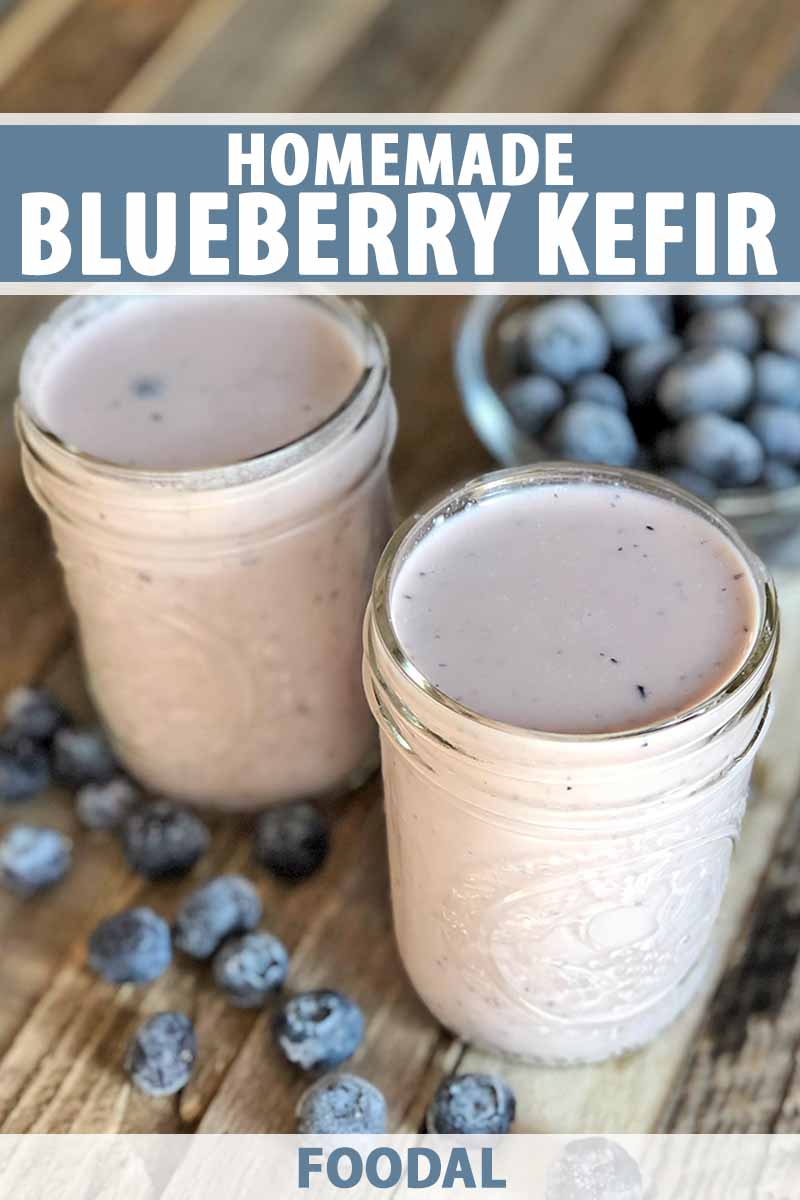
Fancy cocktails, cappuccinos with foam art, and bright green matcha lattes – I’m a sucker for them all.
And this blueberry kefir? It definitely falls into the pretty category with its soft, almost violet color.
But unlike those other drinks listed above, this one is easy and inexpensive to make at home.
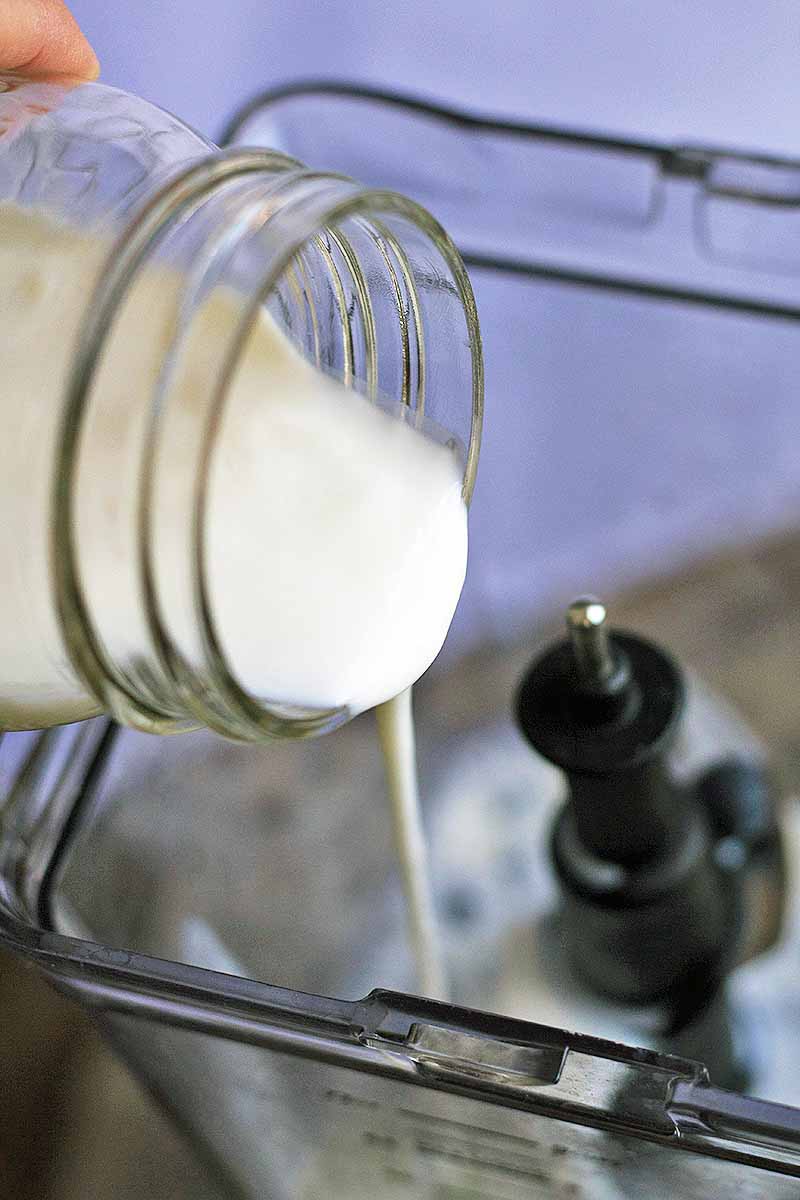
In fact, all you need are three ingredients: homemade kefir, frozen blueberries, and a little sweetener. That’s it!
For those who aren’t already familiar, kefir is a fermented milk drink that’s packed full of beneficial probiotics.
From helping with anxiety and depression to aiding weight loss and helping to alleviate digestive issues, probiotics are beneficial bacteria that live in our guts, yet they can have beneficial effects throughout the body.
While yogurt is another good source of probiotics, kefir is actually a more potent source as it has a higher total number and diversity of probiotics.
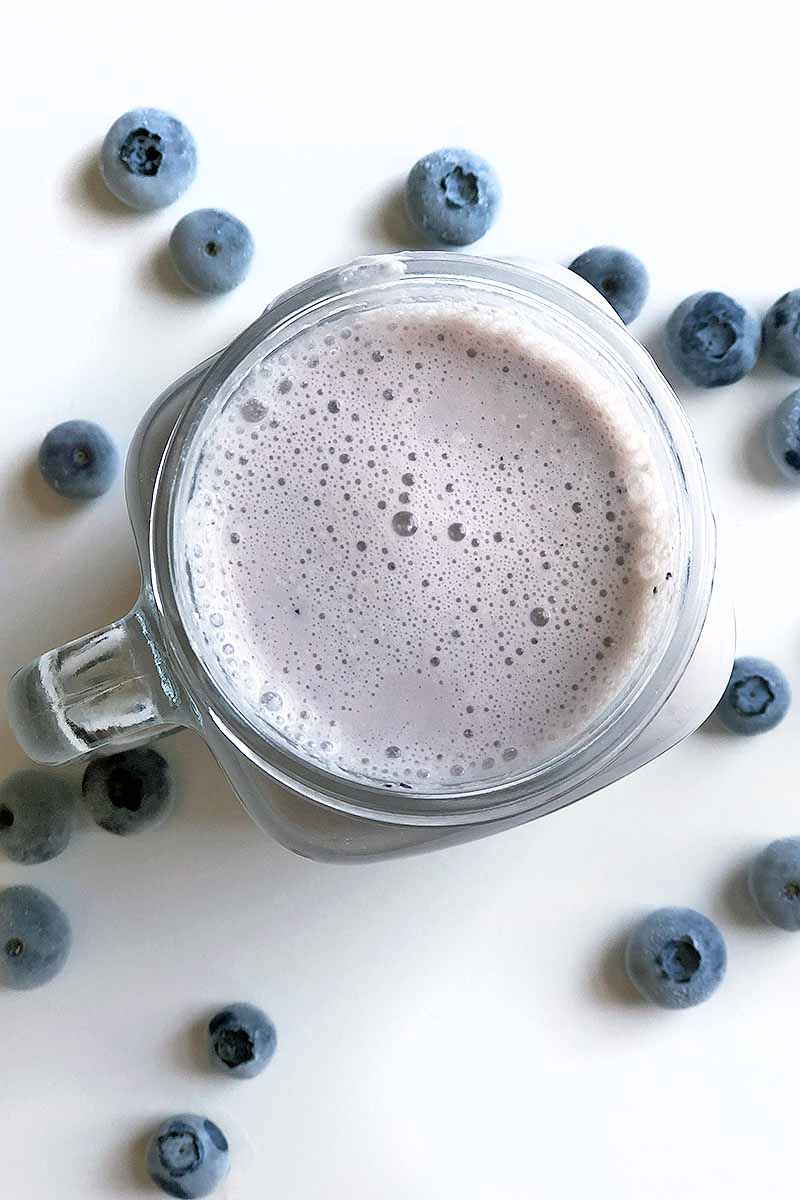
As with other milk-based products, it is an excellent source of calcium and vitamin K, both of which play essential roles in keeping our bones healthy and protecting against loss of bone mass.
However, because it’s fermented, it doesn’t have the same amount of lactose as regular milk and may be tolerated by those with mild or moderate lactose intolerance.
So, what does it taste like?
In terms of texture, this is a drink that is thicker than milk, yet thinner than yogurt.
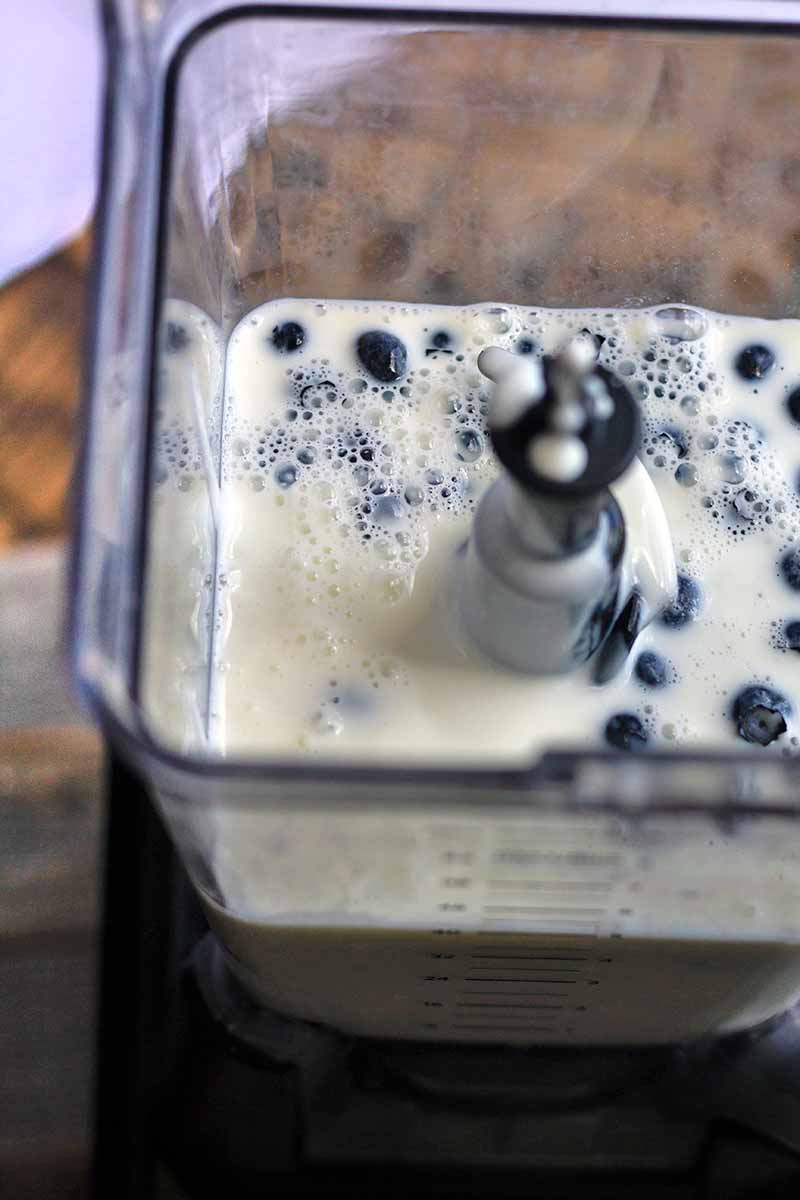
Flavor-wise, it has a similar tanginess to yogurt. While that tang works when added to smoothies or substituted for buttermilk, to drink it on its own, I prefer a little added flavor.
Unlike store bought options that are packed full of sugar, thickeners and other ingredients, this homemade blueberry version gives you full control over how much sugar is added.
If you like the tang of this fermented beverage, you can skip adding the ¼ cup of sugar, or simply reduce it to 1 or 2 tablespoons.
And speaking of blueberries, they add another nutritional punch thanks to their impressive amount of disease-fighting antioxidants.
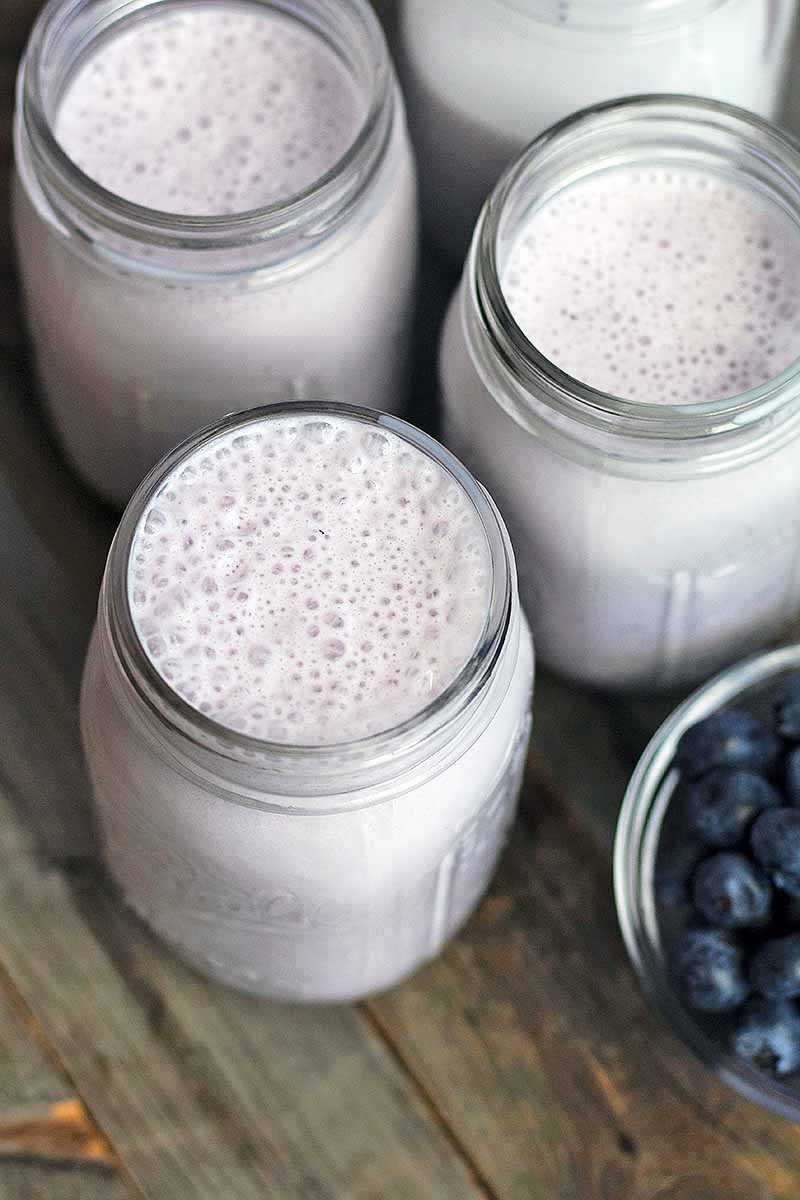
If you don’t have a few jars full of the homemade stuff already in your fridge, be sure to check out our helpful tutorial How to Make Homemade Kefir first for all the tips, tricks, and necessary steps for making your own.
Briefly, you’ll need to combine 1 tablespoon of live kefir grains with 4 cups of whole milk in a glass jar and let it ferment for 24 hours. Strain out the starter grains and you have your homemade probiotic-rich fermented milk beverage, ready to be blueberry-ized!
Of course, you don’t have to limit yourself to just blueberry! Feel free to use any type of frozen fruit that’s in your freezer. Personally, I think frozen cherries would be perfect for the summer – plus, talk about a pretty colored beverage!

Fresh fruit also makes a delicious addition to this beverage in a variety of flavors, depending on whatever’s currently available at your grocery store or farmers market.
To make these meal-prep friendly, store individual servings in resealable jars that you can grab on your way out the door in the morning. This way, there’s no waking up your family or roommates with the sound of a blender.
For a balanced meal, pair a cup of this tasty fermented beverage with a handful of nuts. Again, this is super easy to prep the night before.
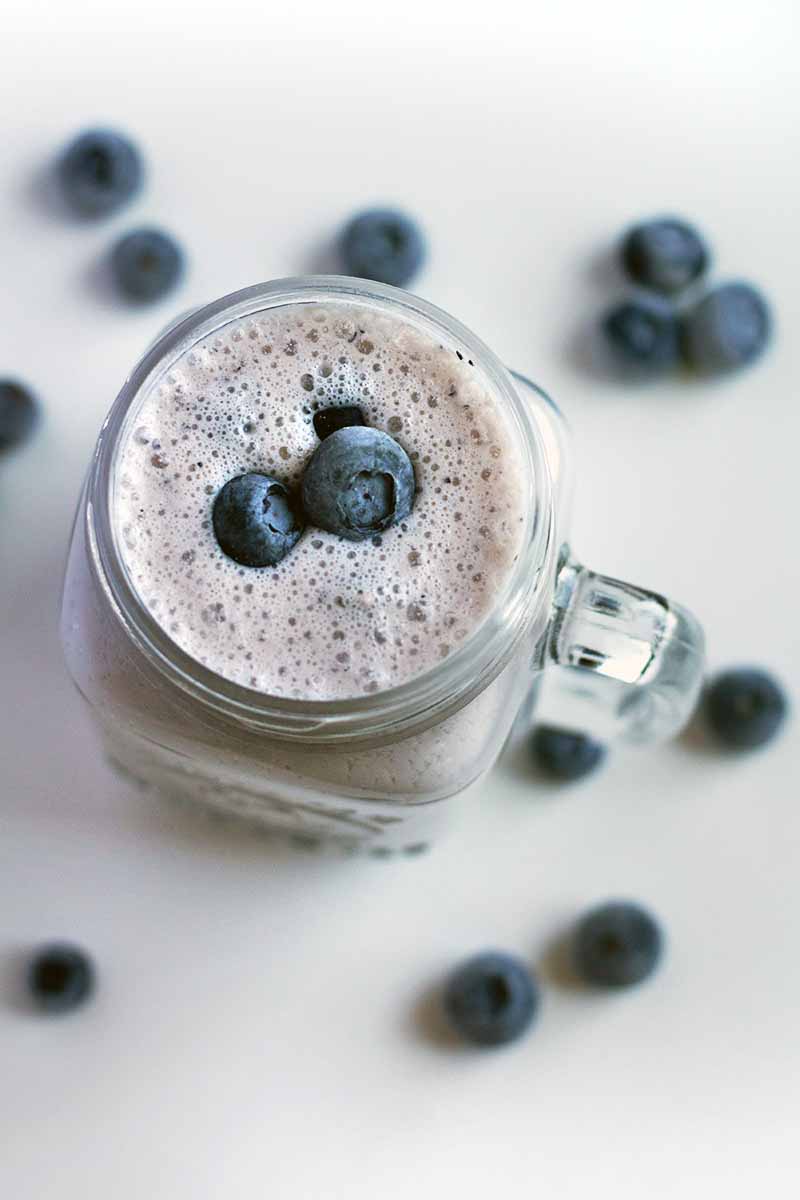
This recipe is so easy, made with minimal ingredients, and it can be prepared ahead of time. There’s no more need to spend money on a bottle of the premade stuff from the store!
Print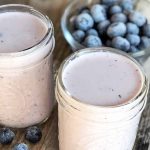
Homemade Blueberry Kefir
- Total Time: 10 minutes
- Yield: 4 servings 1x
Description
Healthier than store bought, this three-ingredient homemade blueberry kefir is rich in probiotics and makes for a healthy snack or breakfast.
Ingredients
- 4 cups homemade kefir
- 1 cup fresh or frozen blueberries
- 1/4 cup granulated sugar, or sweetener of choice
Instructions
- Place all ingredients in a blender and blend until smooth.
- Pour into four individual-sized or two pint-sized containers and store in the fridge for up to 2 weeks.
- Prep Time: 10 minutes
- Category: Probiotic
- Method: Blender
- Cuisine: Beverage
Keywords: kefir, blueberry, smoothie
Cooking By the Numbers…
Step 1 – Measure Ingredients
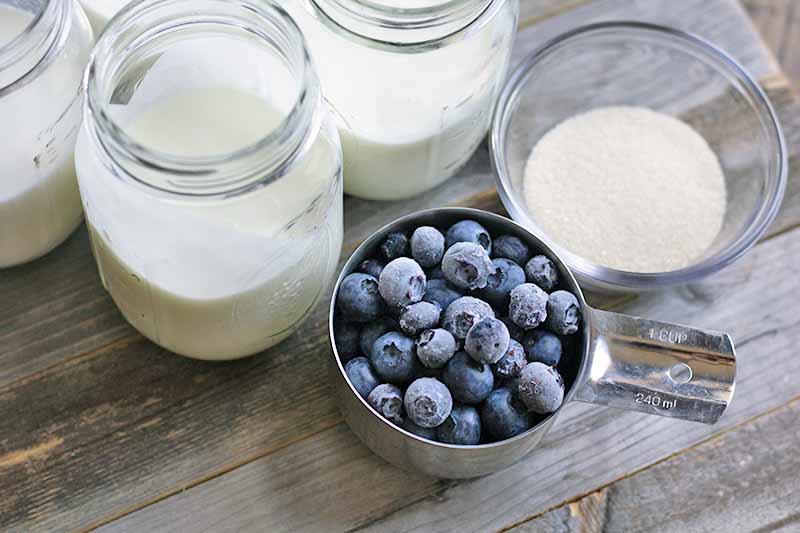
Measure out all of your ingredients.
Fresh blueberries can be used in place of frozen, but note that the resulting beverage won’t be as thick.
Step 2 – Blend

Place all ingredients in a high-speed blender and blend until smooth.
Step 3 – Enjoy or Store
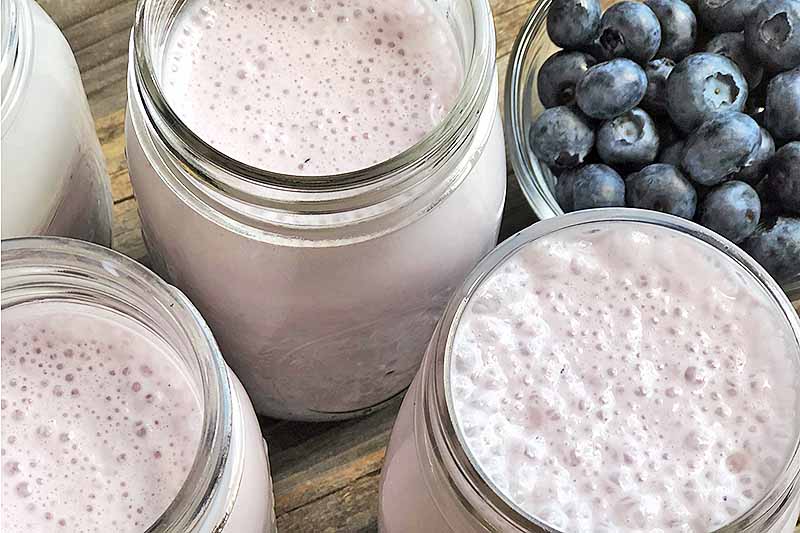
Pour into two pint-sized or four individual containers and enjoy immediately, or store in the fridge for up to 2 weeks.
Before drinking, just give the drink a little shake if it looks like it has separated.
Substitute Kefir in Your Favorite Smoothie Recipes
If you think this recipe sounds a lot like a smoothie, I’d have to admit that you’re definitely onto something.
Once you’ve started making your own kefir, you’ll find your fridge can fill up fast with jars of it.
While making this recipe is one possible use, another easy way to enjoy it is by substituting it for milk or yogurt in your favorite smoothie recipes.

You’re already halfway there with the fermented drink and blended fruit. Why not add some kale, spirulina, and maybe a little ice as well?
Tired of the same old combinations? Here are a few Foodal favorites to try out this nutritious smoothie substitution:
- Easy and Healthy Chocolate Banana Smoothie
- The Best Blueberry Orange Banana Smoothie
- Strawberry Mango Smoothie
- Chocolate Banana Kefir Smoothie
Have you made your own flavored kefir? We’d love to hear your flavor ideas! Share in the comments below, and make sure give this recipe a five-star review after you’ve tried it to let other readers know how much you loved it!
Photos by Kelli McGrane, © Ask the Experts, LLC. ALL RIGHTS RESERVED. See our TOS for more details. Originally published by Shanna Mallon on April 20, 2012. Last updated: December 27, 2022 at 12:07 pm.
Nutritional information derived from a database of known generic and branded foods and ingredients and was not compiled by a registered dietitian or submitted for lab testing. It should be viewed as an approximation.
The written contents of this article have been reviewed and verified by a registered dietitian for informational purposes only. This article should not be construed as personalized or professional medical advice. Foodal and Ask the Experts, LLC assume no liability for the use or misuse of the material presented above. Always consult with a medical professional before changing your diet, or using supplements or manufactured or natural medications.
About Kelli McGrane, MS, RD
Kelli McGrane is a Denver-based registered dietitian with a lifelong love of food. She holds undergraduate and master’s degrees in nutrition science from Boston University. As a registered dietitian, she believes in the importance of food to nourish not only your body, but your soul as well. Nutrition is very personal, and you won’t find any food rules here, other than to simply enjoy what you eat.

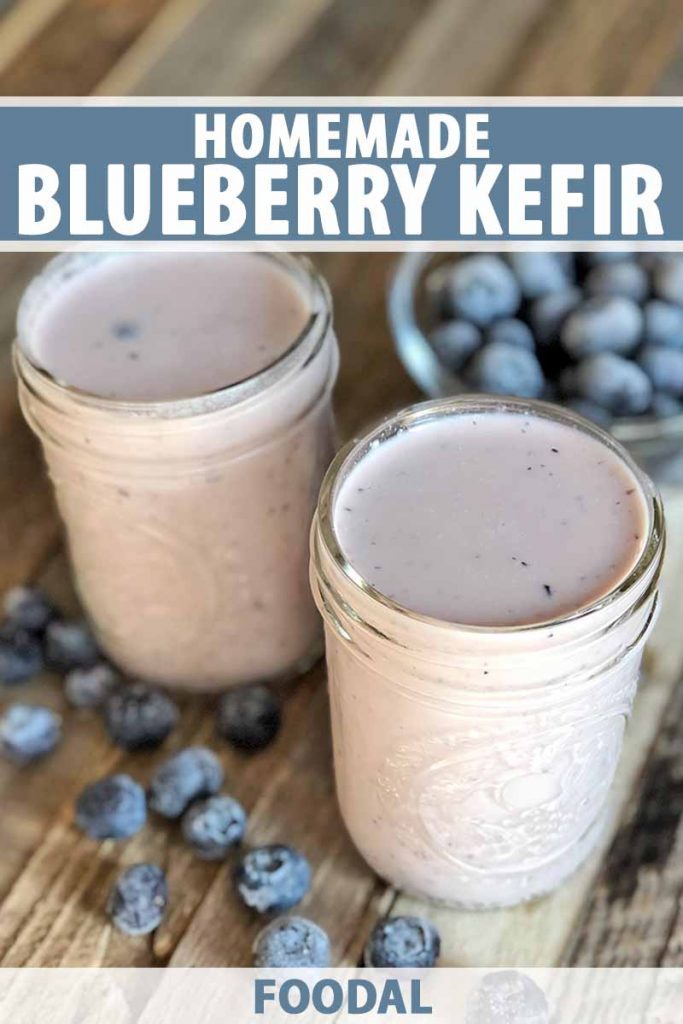
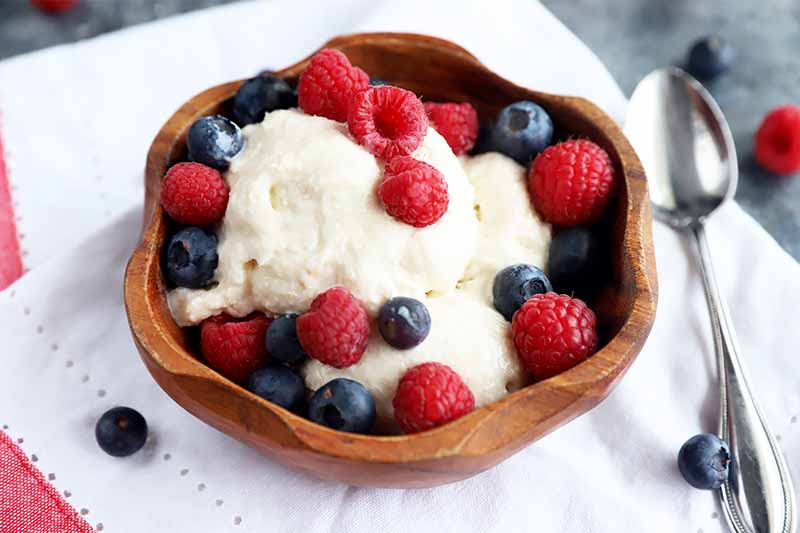
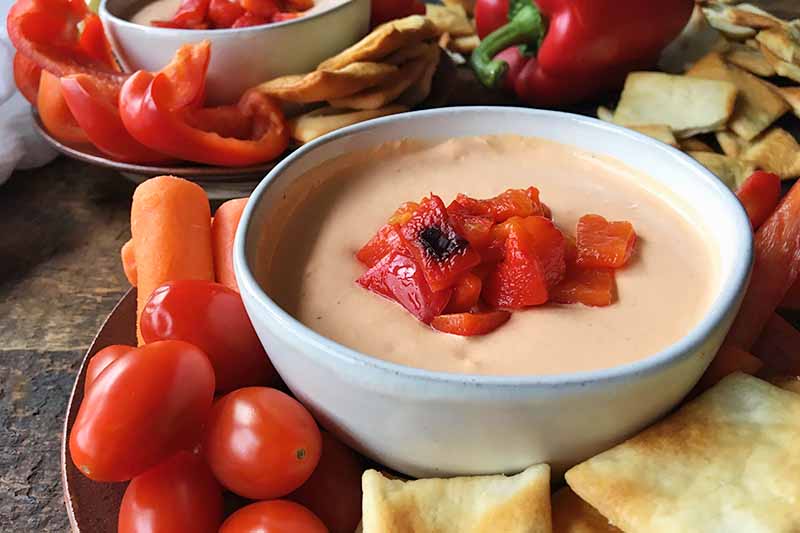

I didn’t know what kefir really was until I read this! I’m going to order some grains this week so I can get started. Just curious-have you ever tried veggies in kefir?
Hi Elizabeth! We’re so excited for your kefir adventures ahead! Regarding veggies in kefir, we’ve never done it—however, we know you can blend just about anything you want with kefir, so you could try that. Also, it’s possible to ferment veggies in kefir because of the good bacteria in it. Have fun!
My husband and I have blended lots of veggies, especially greens, with our kefir. As long as we add a banana, mango, or berries (sometimes with a little honey), you should be able to hide greens no problem!
Ha! Joanna, you know all too well how to have veggies in your smoothies, don’t you! I guess we do have kale in our kefir smoothies, I hadn’t thought about that!
I know this is an old post, but…..honey can and most like will kill off the probiotics in the kefir. This destroys the main reason for having kefir.
★★★★
I’d never heard of this before but it looks and sounds absolutely gorgeous. A little effort, but the end results certainly seem worth it 🙂
thank you! there has been talk in the dwelling about making this. next trip to wegmans will have goat milk on the list.
follow up question: what if you don’t want to make another batch right away? do you wash the grains & keep in fridge?
Lan, Tim says it’s not necessary to wash the grains. When you can’t use them right away, it is best to keep them in milk in the fridge. The longer they sit, the more milk will need to be added to revive them, but they can be revived. If the grains get left for a little while, the milk you put them in the first few times will not have a great taste (more like soured milk) but it can still be used in smoothies or recipes.
I can’t wait to try this!
This is so cool! I actually grew up on kefir (though I’m not sure if my mom made it from scratch or not). It’s one of those things I really need to re-introduce into my diet. The addition of blueberries definitely helps 😉
I love that you grew up on kefir. LOVE it. Tim and I were like, So will our future kids! ha! : )
This is awesome. My little brother is majoring in nutrition in college and he is obsessed with kefir right now (and chia seeds). That boy could talk about kefir all day long! He’s been making it at home but I haven’t sampled it yet. I’ll give it a try the next time he makes some!
Your little brother sounds like someone Tim and I would love chatting with! : ) (Side note: we’re loving chia seeds, too! have you had chia kombucha? i am obsessed.) Love that he’s making kefir—would love to hear what you think when you get to try it!
Hello there,
I’m first time on your site, but I’m hooked and I’m going to read more of your articles.
I’ve never did kefir, but I did homemade yougurt. It’s really easy and a lot of fun. The best thing is that people think that it is some kind of magic behind it and that it requires special skills, while in truth it is really simple and easy. Now I’m going to make artisan cheeses at home. 🙂
Thanks for your blog, greetings from Poland!
Thanks, Atria! I’ve only made homemade yogurt once (here’s a way to make it trickier: try to keep the heat as low as possible to preserve as much good bacteria as you can) but you’re right, it was fun!
Kefir has long been on my list of things to make at home. My belly needs it! Your site’s so lovely, by the way.
My belly does, too! : ) And thank you for your sweet words—your site’s beautiful, too!
This almost seems too easy to be true! I actually think I could handle this 🙂 I drink a kefir smoothie four or five times a week for breakfast with some fruit and spinach. I have been a little concerned about all of the sugar in the kefir I buy (plus, it’s expensive!) so this just might be what I need to replace it with!
Hi MaryAnn!
Yep, there is much less sugar in this version than the store bought–and being in a more unrefined whole form (sucanat) ensures that the other plant minerals from the sugar cane are still there!
Hi I have a daughter with ulcerative colitis and have been making yoghurt for 2 years (its delicious!) but have to have to ferment it at what seems quite hot temps for 24hrs, to enable the cultures to consume the milk sugars. In keffir its at room temperature but it has been recommended my concern is that the milk sugars won’t have been consumed enough..any thoughts??
I’m in Mexico so need to find the kefir grains..fingers crossed!
Hi Carissa,
Thank you for your comment. Kefir is indeed great for restoring healthy flora–even better than yogurt. While yogurt may have 4-6 strains of bacteria, kefir typically has 10-15 strains plus beneficial yeasts. Because it has so much more beneficial bacteria, the milk sugar is consumed very efficiently as all the bacteria feed on the sugar. Also, the milk sugar (lactose) is less of a problem if the milk is raw and from grassfed animals (animals out on pasture and not given grain). The raw milk will have over 60 enzymes, including lactase which helps the digestion of lactose (milk sugar).
Hope that helps!
I was under the impression that one should be “gentle” with kefir. Does running through a blender kill off any of the strains?
Hi Christina,
Some of the strains may be damaged or the biofilm that bacteria form may be damaged. However, the milk has already been cultured, most of the milk sugar consumed, and many bacteria are still intact (same with yogurt, just try using the kefir or yogurt to culture after purchasing or blending–it will still work!). So there are still many benefits even while enjoying the blended version! If you wanted you could blend the fruit first and then stir in the kefir.
Hi,
Awesome info! If I have been using store bought milk for me kefir and would like to switch to raw, is it ok to use the same start? Or would the bad bacteria be best to avoid and i should get a new start?
Hi Debbie,
Yes, you can use the same starter. The good bacteria that culture the store bought milk will also culture the raw milk. One of the main differences is that there are live enzymes and other strains of good bacteria in the raw milk that are not present in the store bought, therefore the texture, consistency, and even taste will be different. The longer raw milk sits the healthier it gets (and more sour : ) as the good bacteria crowd out the bad — the kefir starter will only help protect the milk even more.
Hope that helps!
Thanks for the information. Do you know how long the blueberry kefir will last in fridge once it is flavored?
You’re welcome! Because the kefir is raw and cultured it should last a good while in the fridge. The fridge slows down the fermentation and so the kefir should keep for weeks or months–however the longer it goes the stronger and more sour it gets. The added fruit will get fermented as well and give off more carbon dioxide. I would recommend for optimal flavor consuming it within the week of making it, but it will last for several weeks.
Can you use fresh blueberries? This is my first time making my own, drink it all of the time. Excited to make my own. I got kefir from a friend, added to 2 cups of raw cows milk, to about 5 tbs. of kefir, sitting in a room temp. 65 degrees or less.
So the next step is to strain next day?
Then what do I do after straining, add the blueberries?
And the stuff that is left in the strainer is the kefir grains right?
And then start over by adding to milk again?
How much do you drink per day?
Thanks for your help and dedication to us kefirers! hehehehe
Hi Darlene,
Yes, you can use fresh blueberries!
Yep, strain it the next day when it has the consistency and taste that you like. If you have kefir grains, they will be left and the kefir will have passed through the strainer (if you used the freeze dried packet of starter then you will not have grains and will have to buy more eventually–see the post about the differences). Yes, once you have strained, add the blueberries and blend and enjoy! Add more milk to the grains that are left and repeat for the next day. Drink however much you like or that your body feels comfortable with. Hope that helps and have a great day,
Tim
I just bought some kefir grains and am excited to make kefir for the first time! I’ve made yogurt many times, so culturing isn’t entirely new to me, but kefir clearly has its differences. One question that I can’t seem to find an answer to: if you culture your kefir to the point that the curds and whey have separated, how can you tell the difference between the curds you’ve made and the kefir grains that you want to strain for your next batch? The pictures of the curds and the pictures of the grains all look the same to me. Thanks for any help you can offer!
Hi Amy!
I have done that a few times as well (cultured so long that the curds separate from the whey). The curds have a different texture and feel–so the best I can tell you is to touch and them, ha! The kefir grains are more shiny and slimey than the curds. Also, if they have just begun to separate and you put them through a strainer it will help to see the difference and sometimes the curds will break up even smaller and go through a strainer, while the kefir grains will not. So the best I can tell you is that the curds will have a cheesy texture and the grains a slimey one, and also that the grains have more defined folds and “florets” like cauliflower than the curds : ) Hope that helps some!
Hello Tim and Shanna, I just wanted to thank you for your helpful information about kefir. I just received my portions of milk and water kefir today, and they are now fermenting as I type! I used raw goats milk, because my body is a bit sensitive to cows milk sadly. I hope kefir might make a difference though, so soon I’ll be trying to make it with cows milk. I was just wondering what kind of health benefits you’ve noticed when you started drinking kefir? I can’t wait to see what it does for me, I am very excited haha. It feels like my own little science project 🙂 Hurray for kefir! -Jami
Hi Jami,
You’re welcome! That’s great to hear that your fermenting is underway. We really like goats milk as well! I think we have both noticed that kefir helps our digestion and also gives us an immune boost (or what we perceive as an immune boost). It definitely can help repopulate the gut with good bacteria, which is especially needed in today’s environment. Hooray for kefir, indeed!
Delicious!
Although I am lactose intolerant, I drink a cup of kefir every day. I’ve never had a problem with drinking kefir even though eating or drinking regular milk products, even a small amount, sends my digestive system into revolt.
Interesting!
I had plain, non-homemade kefir that I wanted to make into blueberry kefir, and I used your recipe – it came out perfectly, not too sweet, just right. I used local lavender honey instead of Sucanat.
Thank you!!
I’ve been making and drinking my own raw goat kefir for approximately 4 days now. I’d like to make smoothies for myself, but I’ve read that all fruit is sugar based and thus acidic. if it sits in the kefir in the fridge for a while or possibly on the counter, will the bacteria in the kefir make the fruit more alkaline?
Hi Katie,
Good question. I think it might be helpful to re-think your ideas about fruit. It really depends what guidelines or camp you fall into. As far as alkalinity, most people would say fruit is some of the most alkalizing food, that is, for example, lemons contribute to the alkalinity of the body and yet lemons in nature are very acidic and so it is with most fruit. So the acid doesn’t have to do with the sugar content but just the nature of the food. There are many foods which have sugar and yet are neutral ph but can be acidifying to the body. So it is a little more complex.
In my opinion, however, fruit is some of the best food we can eat due to its water content, ease of digestion, and ideal form and size of minerals–regardless of sugar content. The bacteria in kefir will affect the ph, but typically they add more acids to the product making it acid as far as ph, but it has an alkalizing affect on the body and the bacteria help digestion and improve assimilation of nutrients.
I hope that helps!
Hi . I have got some nice kefir on the go. Some for me and some for the dog.
Have made blackberry kefir today. How long will this stay fresh in the fridge ?
Hi Kay,
It will probably last 2-3 weeks in the fridge. What happens over time is that the bacteria finish eating all the sugar in the kefir and then die.
Hi! I tried to blend fresh organic blueberries into kefir I had strained the day before and stored in the fridge. When I took the first sip it tasted great, but after about 2 minutes I went to take another sip and the smoothie had become one big glob that moved together like a very soft creamy jello. I was able to take a couple more swallows before it was too dense to drink. Do you have any ideas about what the problem could be or what I can do to prevent it in the future?
Hi Figgy,
Blueberries are really high in pectin which makes them gel when combined with sugar or acid (kefir). So ideally you just blend and drink right away. Blueberries that are more ripe gel less, and not adding the acid or sugar would make it gel less, but in this case that is the point (to combine the two). Heating it would also cause the gel to soften and be less dense (but we prefer it raw). You can always try it with a different fruit as well such as cherries, strawberries, or peaches!
I’ve been so inspired to start up some kefir lately….this is super helpful! 😀 It looks so amazing and fresh and nutritious.